The Tango Halls of Buenos Aires: Unveiling the Soulful Rhythms of Argentina
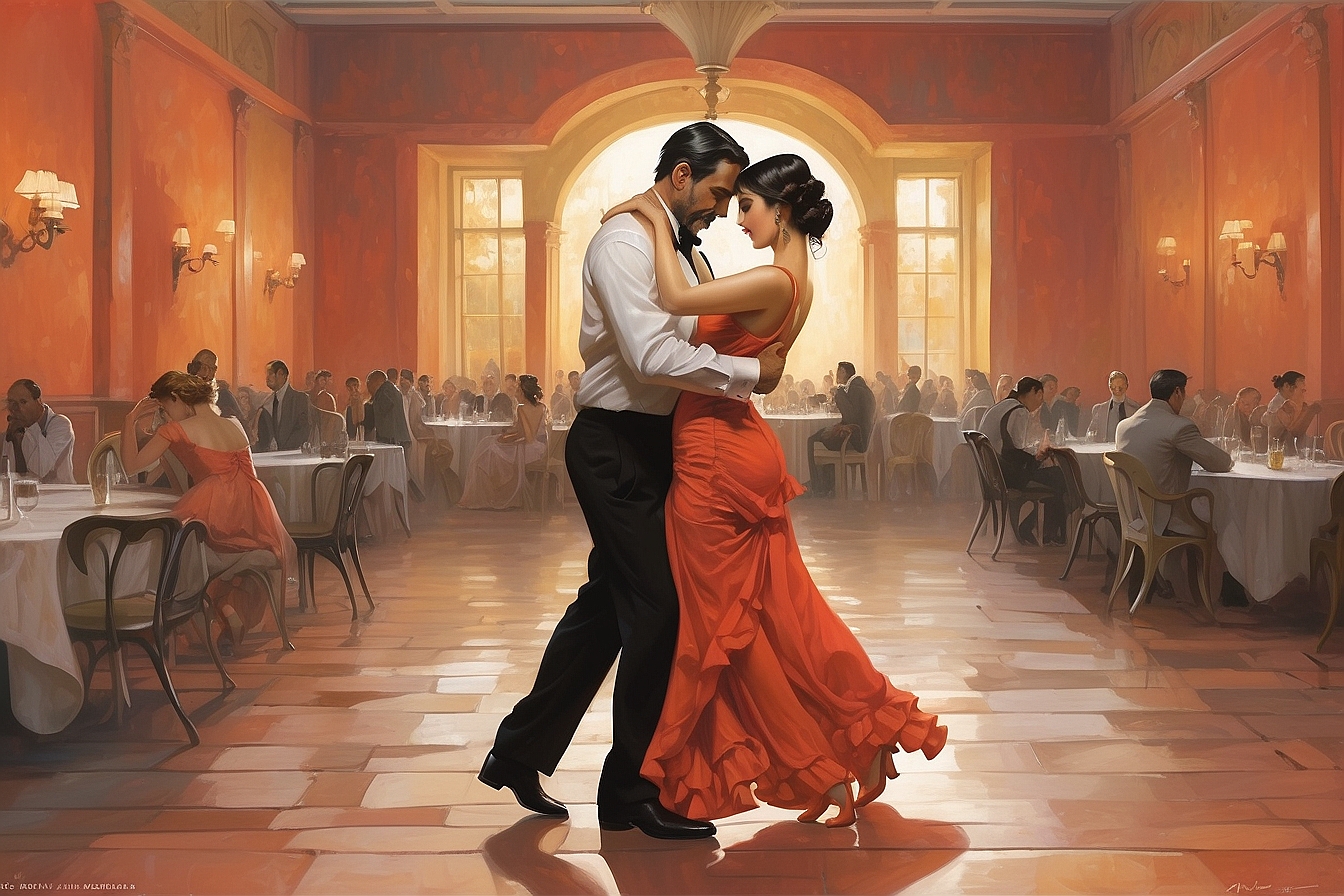
Updated On: April 14, 2024 by Maha Yassin
Tango in Buenos Aires is not just a dance; it embodies passion, a cultural icon, and a memoir of Argentina’s rich history. Originating in the working-class port neighbourhoods of the city, the dance has ascended from its humble beginnings to receive global acclaim. Today, Buenos Aires remains the heart of tango culture, with vibrant Tango halls known as milongas, welcoming both the novice and the seasoned dancer into their embrace, ensuring that the spirit of tango pulsates through the city’s cobblestone streets.
Exploring the famous tango halls of Buenos Aires offers a journey into the soul of Argentina. Whether it’s the intimate embrace of the dance, the nostalgic pull of the bandoneón, or the intricate footwork on display, each milonga tells its own story. And workshops and classes are readily available for those keen to learn, offering a gateway to mastering this profound dance form. Buenos Aires invites all, from the curious tourist to the tango lover, to experience tango not just as a dance but as a social event that encapsulates the vibrant culture of Argentina.
The Birth of Tango in Buenos Aires
The vibrant tango dance has its heart in the bustling streets of Buenos Aires. We trace its journey from the margins of society to mainstream cultural acclaim, a path as captivating as the dance itself.
From the Streets to Dance Halls
In the late 19th century, tango began living in the underprivileged neighbourhoods of Buenos Aires, such as La Boca. This was when the city was a melting pot of immigrants who brought diverse musical influences that coalesced into an entirely new art form. They gathered in courtyards and on street corners, expressing their yearnings and struggles through music and dance that would eventually capture the world’s attention.
By the early 20th century, tango had moved from these impromptu street gatherings to established dance halls, where it continued to evolve. It spread throughout the city and was embraced by the working class and, eventually, the higher echelons of society. Carlos Gardel, often referred to as the father of tango, was paramount to this transition. With his powerful voice and charismatic stage presence, Gardel propelled tango from local dance floors to international fame.
Tango is now recognised as a cultural heritage that intertwines the history, the people, and the soul of Buenos Aires. Revered as an art form globally, it remains deeply embedded in the culture of Argentina’s capital, where it continues to serenade young and old dancers in the illustrious halls that host this dance of the heart.
Exploring Famous Tango Halls
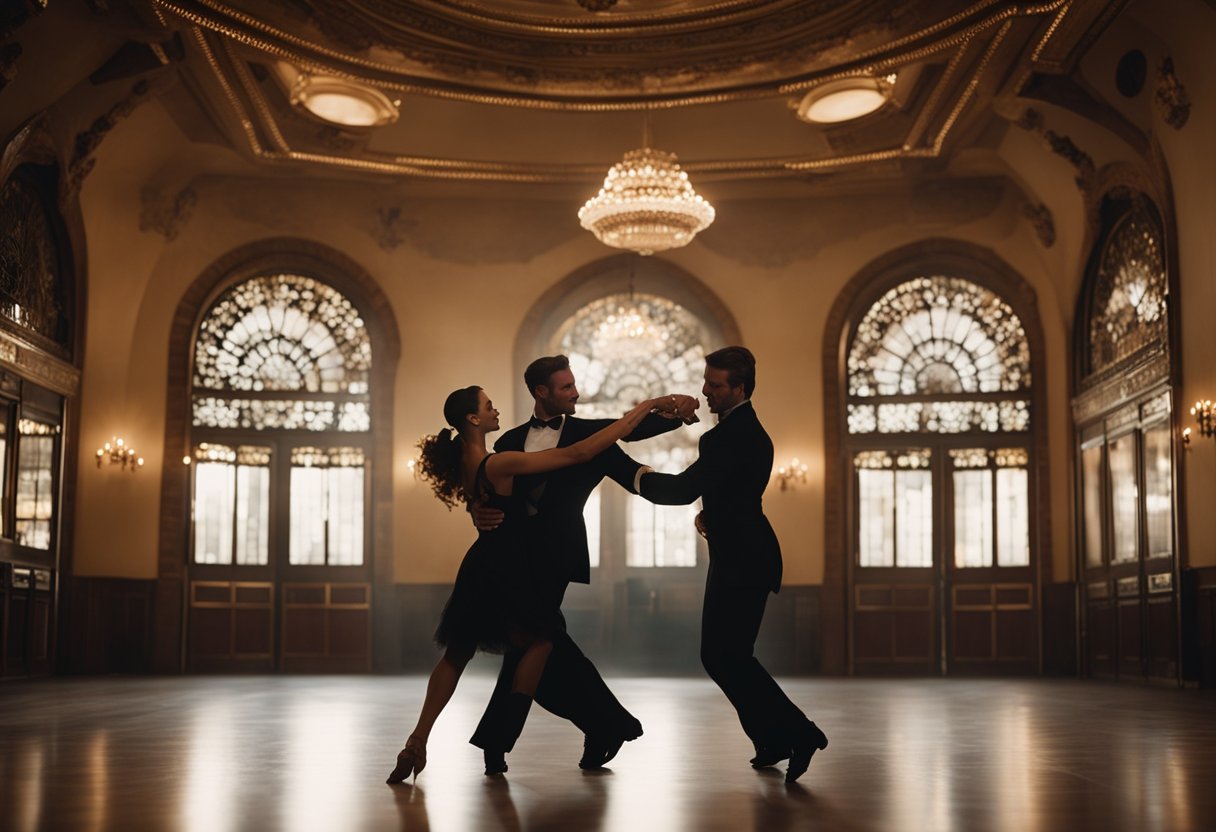
When we immerse ourselves in the tango culture of Buenos Aires, famous dance halls stand out as living museums of this passionate dance.
El Beso and Confiteria Ideal
El Beso, revered as one of the quintessential tango halls, pulsates with the essence of tango in every corner. As if frozen in time, it remains a place where the ardour of tango dancers is palpable. Located in the vibrant neighbourhood of Almagro, its intimate space advocates for a close connection among its patrons, and it is a piece of Buenos Aires’s soul for both locals and tourists alike.
Moving through the city, another historical gem, Confiteria Ideal, commands attention. With its grandeur and antique decor, this venue connects us to a legacy of tango elegance. Reminiscent of Buenos Aires’s golden age, dancers glide across the floor under ornate ceilings as the music echoes the tales of the city’s bygone eras.
Salon Canning and La Viruta
Salon Canning welcomes us to the heart of Palermo with its spacious dance floor and classic atmosphere, which has hosted countless milongas over the years. The spirit of tango infuses every dance, and both novices and tango fans can feel at home.
Not far lies La Viruta, a youthful counterpart where tango meets contemporary in a dynamic blend. As a hub for the spirited and modern tango scene, it offers an enticing invitation to experience this traditional dance in a fresh and innovative environment.
Our journey through the tango halls of Buenos Aires brings us to venues like Piazzolla Tango, set in the historic neighbourhood of San Telmo. It offers a mesmerising space that marries the old with the new, celebrating tango’s timeless appeal. By stepping into these hallowed halls, we partake in a tradition that continues to beat at the heart of Buenos Aires’ cultural identity.
A Guide to Milongas
In Buenos Aires, the milonga is an institution, a vibrant gathering place where the soul of tango lives. Here, passionate dancers move to timeless music, and each milonga offers its unique blend of tradition and innovation.
Traditional Milongas
Traditional milongas are the bastions of tango culture in Buenos Aires, steeped in history and exuding elegance. Dressed to the nines, attendees revel in the dance’s sensuality, often following strict codes of conduct and dance etiquette. The music in these milongas harkens back to the golden age of tango with classic tracks that inspire the dancers. The atmosphere is one of respectful intimacy, where the dedicated tangueros and tangueras showcase their adept footwork and close embrace. To experience such revered gatherings, one might consider the Buenos Aires Tango & Milonga Guide, which provides insights into the most iconic venues.
Modern Milongas
Conversely, modern milongas offer a contemporary twist on the traditional tango scene, infusing new musical styles and a relaxed ambience. These venues attract a dynamic crowd keen on experimenting with their dance moves. While the essence of the tango performance remains, you’ll feel a different energy, as DJs might mix in non-tango music, and a more accessible spirit flows through the dance floor. For those eager to wear their dancing shoes and join the modern milieu, the Culture Trip’s list of best milongas is an excellent resource for finding the perfect spot.
Immersive Tango Shows
In Buenos Aires, the tango is not just a dance; it’s a celebration of passion and heritage that captivates the hearts of tourists and locals alike. Immersive tango shows take this experience to a new level, offering a fusion of intense emotion and cultural depth within spectacular venues.
Rojo Tango
Venue: Hotel Faena
Show Times: Nightly
Experience: Intimate and luxurious
Audience: Suitable for tourists seeking exclusivity
When it comes to an elite tango experience, Rojo Tango is unparalleled. Held in the opulent surroundings of the Hotel Faena, this show is a favourite among seasoned tango enthusiasts. The atmosphere in Rojo Tango is electric, with performers expressing the raw emotion of each dance, combined with sophisticated choreography and live music. This intimate setting ensures every spectator feels the passion woven into the fabric of this sensual dance.
Piazzolla Tango
Venue: Teatro Astor Piazzolla
Show Times: Evening performances
Experience: Traditional with a modern twist
Audience: Tourists and locals appreciating both innovation and tradition
Piazzolla Tango, located in the historic Teatro Astor Piazzolla, honours the legendary composer’s new vision for tango. With a show that seamlessly blends tradition with contemporary elements, it captures the soul of Buenos Aires through breathtaking performances and a solid musical ensemble. The venue itself, steeped in history, provides the perfect backdrop for an event that is both a nod to the past and a step into the evolution of tango.
The Essence of Tango Dance
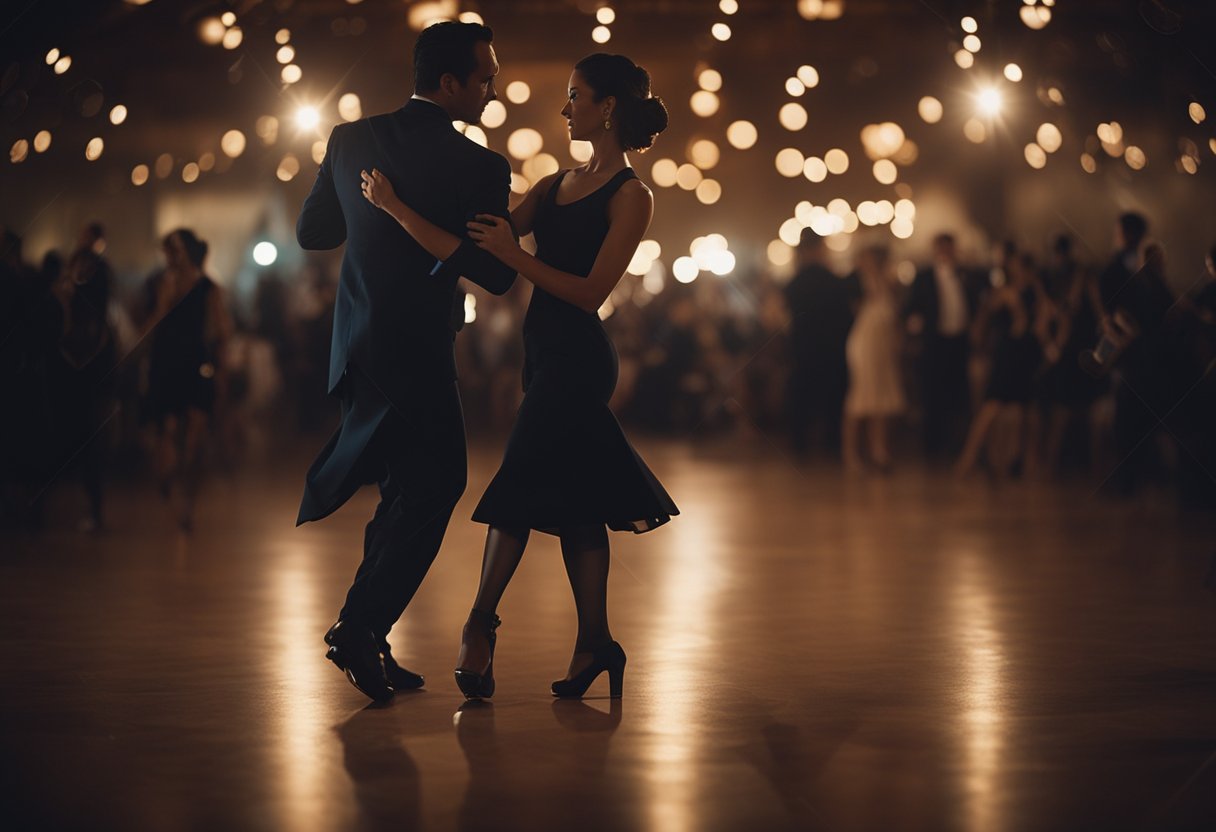
Tango is not merely a dance; it’s a language of intimacy and a display of culture that weaves a story with every step. Our movements translate the music’s passion into a conversation between two people, creating a profound and unique experience for the dancers involved.
Movement and Technique
Tango commands a distinct technique that involves precise movements and an array of steps. The walk is fundamental, with a heel-toe movement that projects elegance and fluidity. Ochos (figure-eights) and giros (turns), executed with meticulous footwork, are integral to the choreography. Dancers must develop a strong core and balance to execute complex patterns expressing the dance’s melancholy and intensity.
Close Embrace and Connection
The close embrace is the hallmark of Argentine Tango. It’s a tangible manifestation of trust and connection, where dancers share their centre, remain chest-to-chest, and often cheek-to-cheek. This intimacy allows for subtle cues and leads to occur through the slightest change in pressure or muscle tension. The connection is more than physical; it’s an emotional conduit, enabling us to express the music’s depth and creating a dialogue that’s felt in the heart just as much as it’s seen in our movement.
Tango Music and Its Influences
With its rich complexity and global influences, Tango music has been the heartbeat of Buenos Aires’s dance halls for over a century. It is a genre that intricately weaves diverse cultural threads, creating an intoxicating soundscape for dancers and listeners.
Orchestration and Rhythm
Tango music’s soul-stirring qualities lie in its unique orchestration and rhythm, shaped by a fusion of global influences. Historically, the genre has blossomed with contributions from various European, African, and indigenous cultures, leading to an unmistakably rich and multifaceted sound.
The classic tango ensemble, known as an ‘orquesta típica’, commonly includes the bandoneón with its evocative, accordion-like timbre, violins, a piano, and a double bass. These instruments blend to produce the quintessential tango rhythm, which is both syncopated and flowing, imbuing the music with a palpable energy that influences the dance’s choreography.
Rhythm in tango is a complex affair, underscored by variable tempo and sudden pauses known as ‘cortes’ that add drama to music and movement. This intricate rhythmic structure compels the close embrace and precise footwork of the Tango Argentino, guiding dancers in their emotional and physical expression across the dance floor.
Learning Tango: Classes and Workshops
In Buenos Aires, the birthplace of tango, there’s a wealth of options for those eager to learn this passionate dance. From group classes tailored for beginners to private sessions crafted for advanced dancers, every student can find a fitted path to master tango’s intricate steps.
Group Classes for Beginners
For beginners, group classes offer a friendly and social environment in which to start the tango journey. At places such as La Viruta, you can find classes catering to different experience levels. These group classes are ideal for those just dipping their toes into the world of tango, providing a strong foundation in the basics of the dance. Within a structured framework, beginners will learn the essential steps and rhythms fundamental to authentic Argentine tango.
Private Lessons for Advanced Dancers
Private lessons are the way forward for those who already have a grasp of the basics and wish to refine their skills. Advanced dancers often seek personalised instruction to perfect their technique, work on intricate figures, or prepare for performances. Instructors, such as the experienced Luciana Valle at Dance of the Heart, offer intensive, one-on-one sessions that focus on each student’s unique needs and goals, providing detailed feedback and bespoke exercises to enhance their dancing skills.
Tango as a Social Event
Tango in Buenos Aires is a vibrant embodiment of Argentinean culture, offering a rich social experience through the dance known as Milonga. It is a dance and a social gathering that brings people together in the evenings and afternoons, uniting friends and strangers in a shared rhythm.
Dancing with Friends and Strangers
At a Milonga, the atmosphere is charged with anticipation—from the early afternoon into the long stretches of the evening, people converge in these traditional dance halls. Couples and friends connect, sharing dances and with strangers who quickly become part of the extended tango family. It is a place where etiquette is honoured, and the embrace of the dance opens channels of communication beyond words.
The essence of these social events is the interplay between the music and the dancers. Whether you are an experienced dancer or a first-timer, the lure of the Milonga is irresistible. The community welcomes and binds participants in an unspoken agreement of mutual respect and the joy of dance. Each Milonga carries its unique flavour, but the sentiment remains constant: a collective heartbeat set to the tempo of tango.
The Fashion of Tango
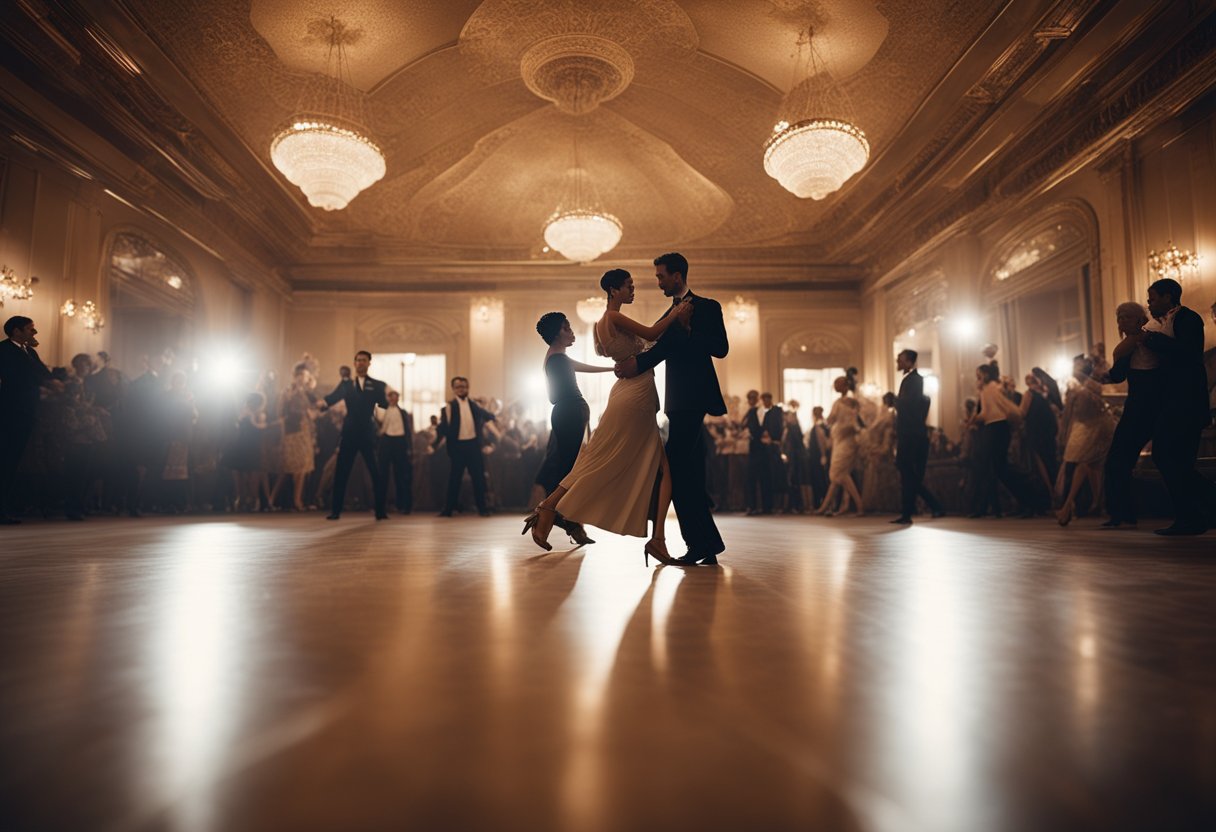
As connoisseurs of the dance, we hold that the essence of tango fashion is deeply intertwined with the elegance and passion that characterise the dance itself.
Traditional Attire and Modern Trends
Elegance is intrinsic to tango attire, harking back to its historical roots. Women traditionally grace the dance floor in high-waisted skirts or dresses that flare delicately, allowing freedom of movement and a dramatic flair. These garments are often black, embodying the sophistication of the dance, and are paired with fishnet stockings and high-heeled, closed-toe shoes for that quintessential tango silhouette.
For men, the emphasis lies on smart tailoring; a well-fitted suit and hat convey a sense of respect for the partner and the dance. Trousers are kept loose for ease of movement, while shirts are usually crisp and accompanied by a waistcoat or suit jacket.
In our contemporary setting, however, tango fashion has welcomed modern trends without losing touch with its passion-driven essence. Designers have embraced more comfortable clothes for training while retaining stylish cuts for performances, ensuring dancers look and feel their best. Tango shoes have similarly evolved, ensuring enhanced support and aesthetics, perfectly blending traditional appeal with modern practicality.
To discover vivid examples of this beautiful harmony of style and function, you may enjoy viewing the fashion on websites like Guide to Dance Fashion and Tango Fashion Designer Info blog, which provide a glimpse into how these fashion elements come into play.
The evolution of attire makes it clear that whether steeped in tradition or infused with contemporary elements, the outfits worn during tango are not just about visual appeal—they’re an extension of the dance’s soulful expression, its narrative arc told through posture and pivot, elegance and emotion.
Culinary Delights in Tango Venues
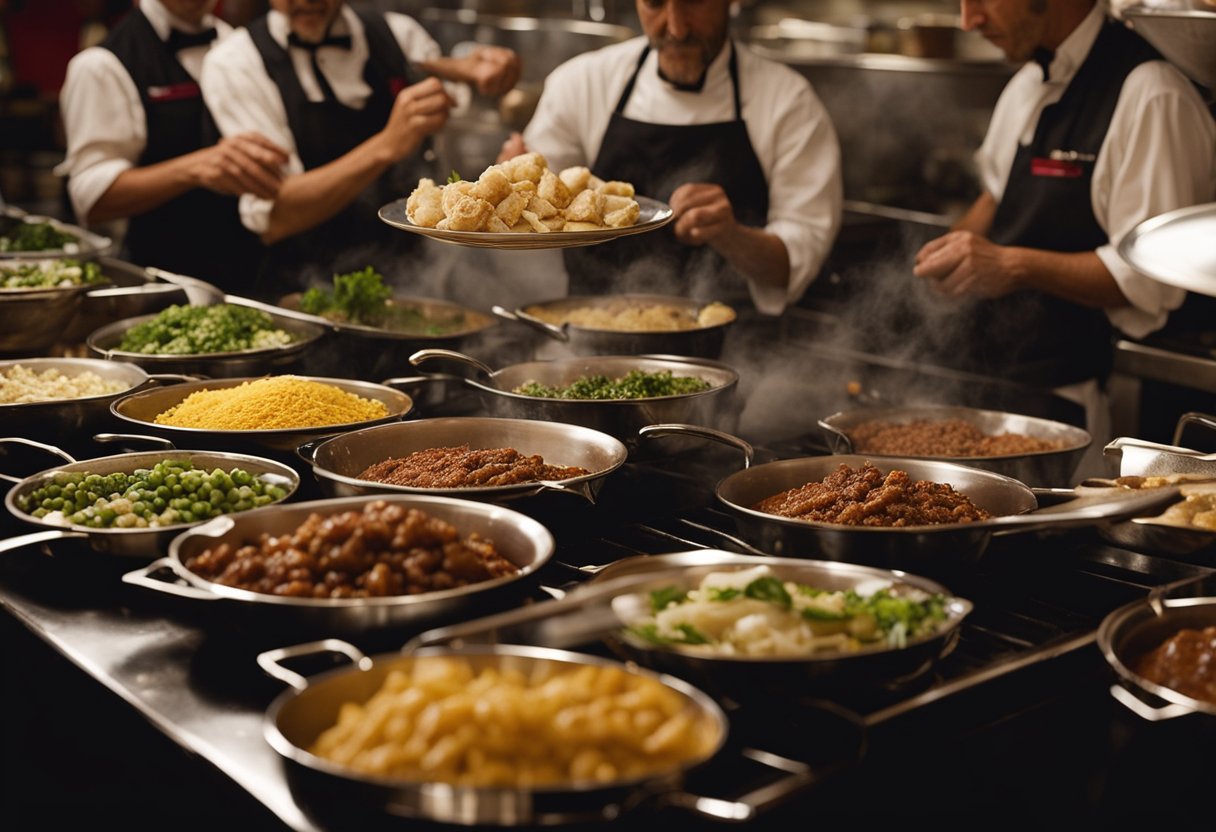
When the rhythmic steps of tango are paired with Argentina’s esteemed culinary offerings, the experience becomes an epitome of cultural delight.
Steak and Wine Pairing
Our exploration leads us to the quintessential Argentine steaks, renowned globally for their tenderness and rich flavour profile. Savouring these succulent cuts within the environs of Buenos Aires tango venues adds a unique dimension to the dining experience. The steak becomes an art form when complemented by a curated selection of robust Argentine wines, creating a harmonious blend of tastes to enhance the evening.
In venues such as the historical cabarets of Buenos Aires, one can anticipate high-quality steaks prepared with the culinary precision that Argentina prides itself on. The Faena Hotel in Puerto Madero elevates this union further with its opulent decor and exquisite wine list, ensuring every sip and bite is part of the tango voyage.
Tango for Tourists: A Complete Experience

We uncover the thrilling ambience of Buenos Aires, a city that pulses with the rhythm of the tango. Tourists are beckoned into the dance’s embrace through authentic venues where the art of tango thrives. Each district offers a unique backdrop for this passionate experience.
Experiencing Tango in Different City Districts
Palermo Soho: This trendy neighbourhood is known for its bohemian vibe and artistic flair, making it a popular spot for tango enthusiasts. We can attest to the vibrant milongas that cater to varying levels of expertise, from beginners to the most seasoned dancers.
San Telmo, steeped in history, is a must-visit for tango lovers. Its traditional milongas, often held in colonial buildings, echo the timeless essence of Buenos Aires tango culture. We often recommend watching or joining a street-side performance to capture the spirit of San Telmo truly.
With its colourful Caminito street and rich artistic aura, La Boca beckons tourists to experience tango in its most picturesque setting. La Boca’s open-air performances provide a captivating introduction to the dance.
Last but not least, Puerto Madero‘s modern and upscale edge offers a contrasting environment for tango. Here, we encourage tourists to indulge in a dinner show that combines gourmet Argentine cuisine with world-class tango performances.
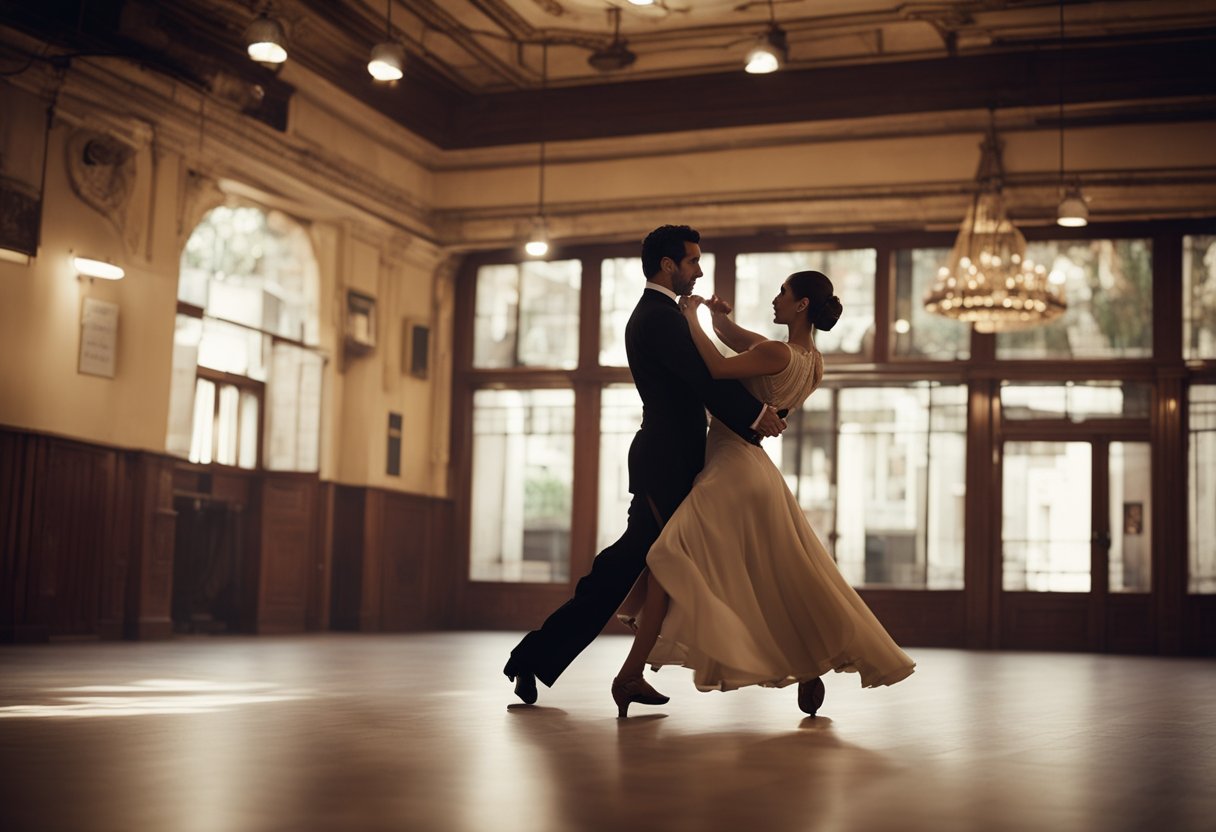
FAQs
Let us guide you through some of the most commonly asked questions about Buenos Aires’ vibrant tango scene and what makes it a pulsating heart of Argentine culture.
Which tango performance is considered a must-see in Buenos Aires?
The Rojo Tango show at the Faena Hotel is renowned for its opulent experience, blending luxury with the intimate embrace of traditional tango.
For what reasons was the Argentine tango historically prohibited?
Argentine tango faced prohibitions in its early years due to its working-class origins and the sensual nature of the dance, which clashed with the prevailing social norms of the time.
What cultural significance does the tango hold in Argentina?
Tango is more than a dance in Argentina—it is a cultural symbol that embodies the country’s history, emotions, and artistic expression, reflecting the soul of Buenos Aires itself.
Are tango performances in Buenos Aires deemed a valuable experience?
Attending tango performances in Buenos Aires is a valuable experience; it provides a direct insight into the genuine art form and a poignant way to connect with Argentine heritage.
How has the tango influenced Argentine cultural identity?
Tango has profoundly shaped the Argentine cultural identity by becoming a global ambassador, showcasing its creativity and emotionality, and being a celebrated part of UNESCO’s Intangible Cultural Heritage of Humanity.
What should one expect when attending a tango hall in Buenos Aires?
When visiting a tango hall in Buenos Aires, expect an immersive experience of live music, skilled dancing, and the palpable passion that defines the traditional Argentine tango atmosphere.






